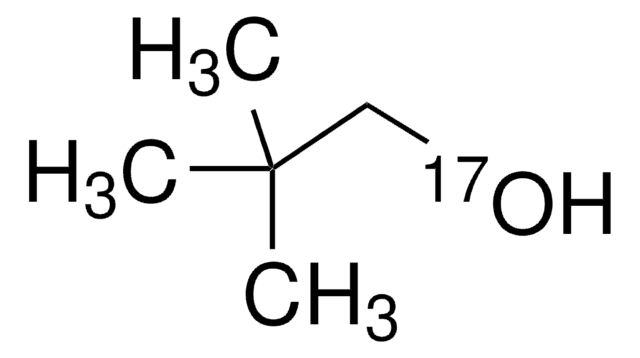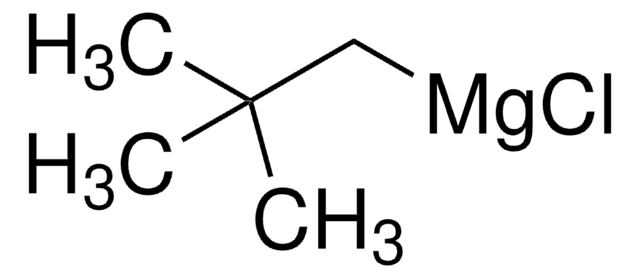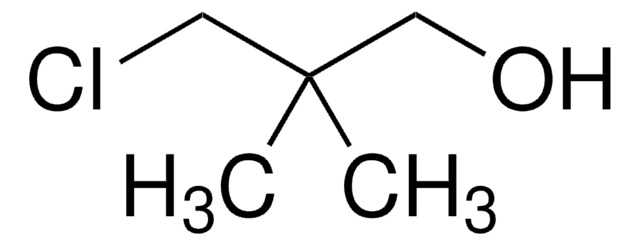N7206
2,2-Dimethyl-1-propanol
99%
Sinonimo/i:
tert-Butylmethanol, Neoamyl alcohol, Neopentanol, tert-Butyl carbinol, Neopentyl alcohol
About This Item
Prodotti consigliati
Tensione di vapore
16 mmHg ( 20 °C)
Saggio
99%
Forma fisica
crystals
P. eboll.
113-114 °C (lit.)
Punto di fusione
52-56 °C (lit.)
Densità
0.818 g/mL at 25 °C (lit.)
Stringa SMILE
CC(C)(C)CO
InChI
1S/C5H12O/c1-5(2,3)4-6/h6H,4H2,1-3H3
KPSSIOMAKSHJJG-UHFFFAOYSA-N
Cerchi prodotti simili? Visita Guida al confronto tra prodotti
Categorie correlate
Applicazioni
- 2,2-Dimethyl-1-propanol can be used in the synthesis of surfactant that stabilize reduced graphene oxide (rGO) dispersion.
- Biodiesel containing branched-chain esters prepared by the transesterification of vegetable oils with 2,2-dimethyl-1-propanol has been reported to show lower crystallization temperature when compared to methyl and ethyl ester counterparts.
Avvertenze
Danger
Indicazioni di pericolo
Consigli di prudenza
Classi di pericolo
Acute Tox. 4 Inhalation - Flam. Sol. 1 - STOT SE 3
Organi bersaglio
Respiratory system
Codice della classe di stoccaggio
4.1B - Flammable solid hazardous materials
Classe di pericolosità dell'acqua (WGK)
WGK 1
Punto d’infiammabilità (°F)
82.4 °F - closed cup
Punto d’infiammabilità (°C)
28 °C - closed cup
Dispositivi di protezione individuale
Eyeshields, Gloves, type P3 (EN 143) respirator cartridges
Certificati d'analisi (COA)
Cerca il Certificati d'analisi (COA) digitando il numero di lotto/batch corrispondente. I numeri di lotto o di batch sono stampati sull'etichetta dei prodotti dopo la parola ‘Lotto’ o ‘Batch’.
Possiedi già questo prodotto?
I documenti relativi ai prodotti acquistati recentemente sono disponibili nell’Archivio dei documenti.
I clienti hanno visto anche
Il team dei nostri ricercatori vanta grande esperienza in tutte le aree della ricerca quali Life Science, scienza dei materiali, sintesi chimica, cromatografia, discipline analitiche, ecc..
Contatta l'Assistenza Tecnica.













